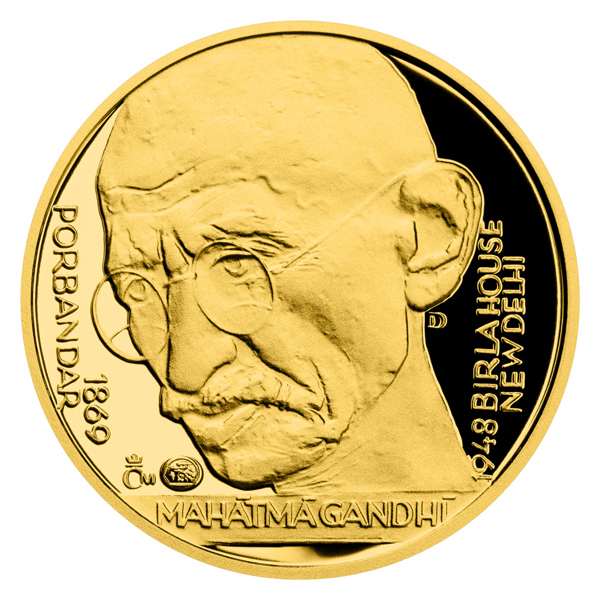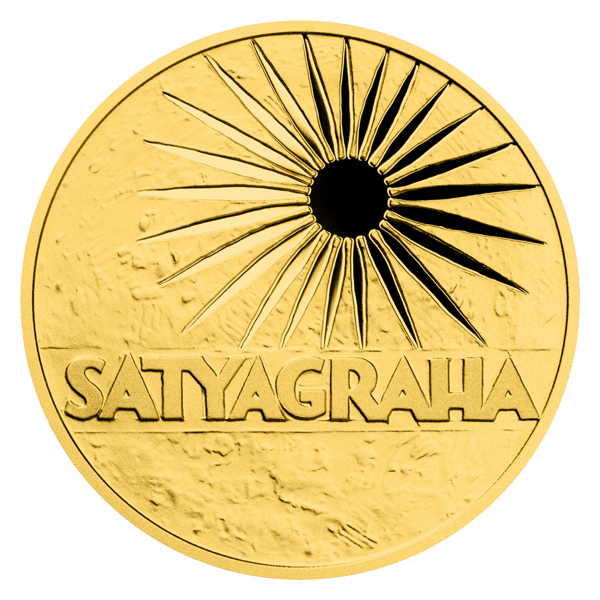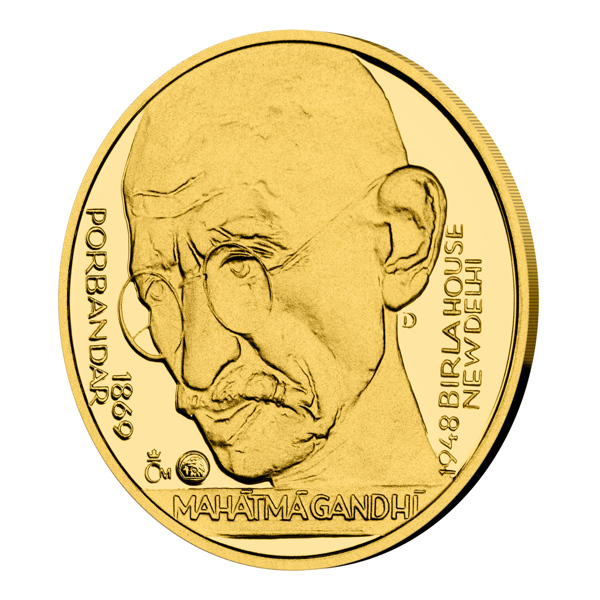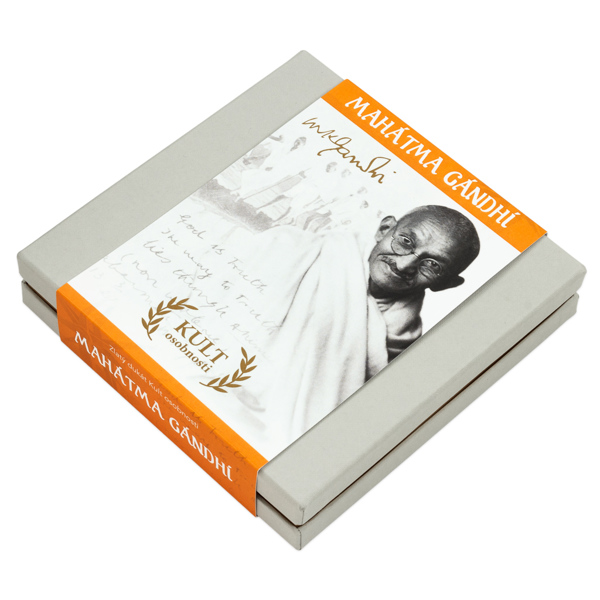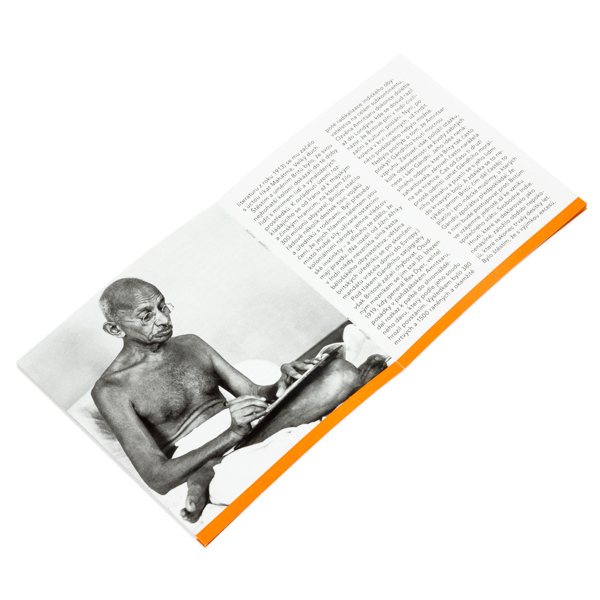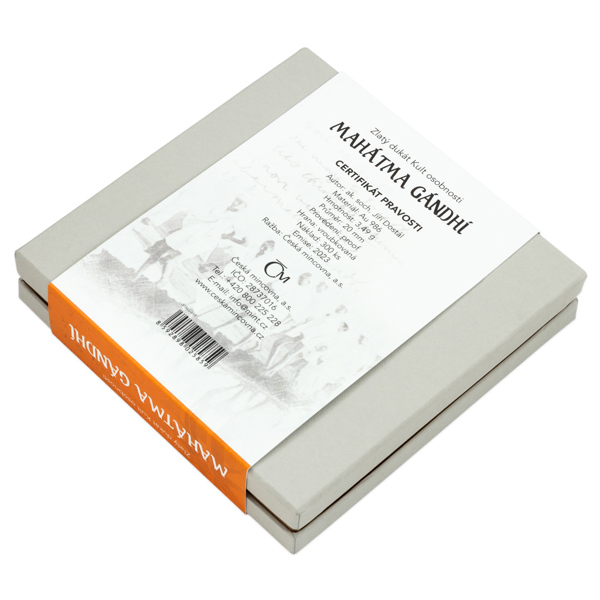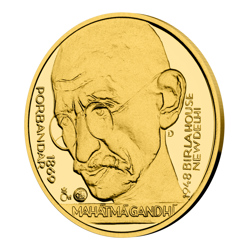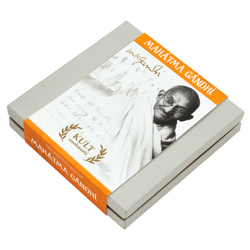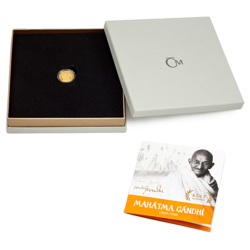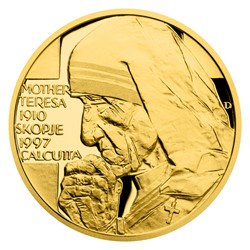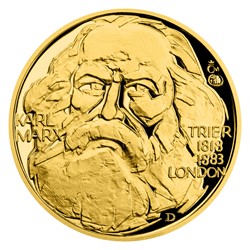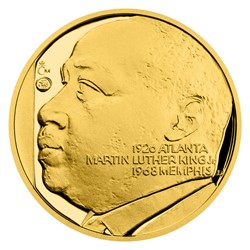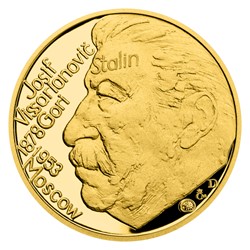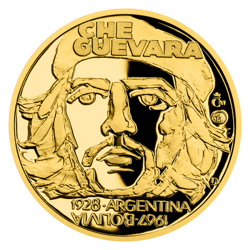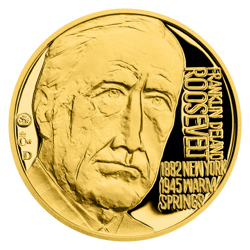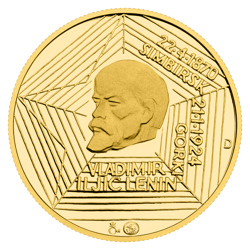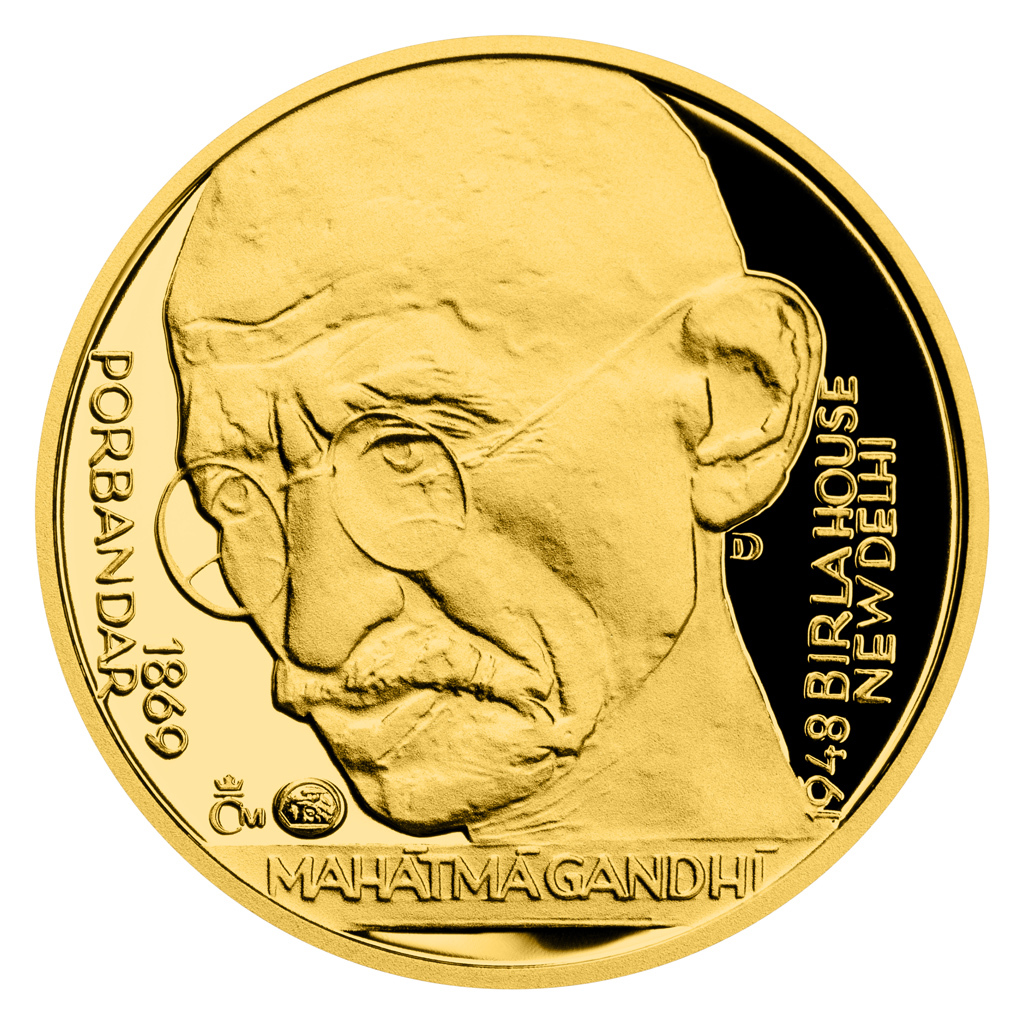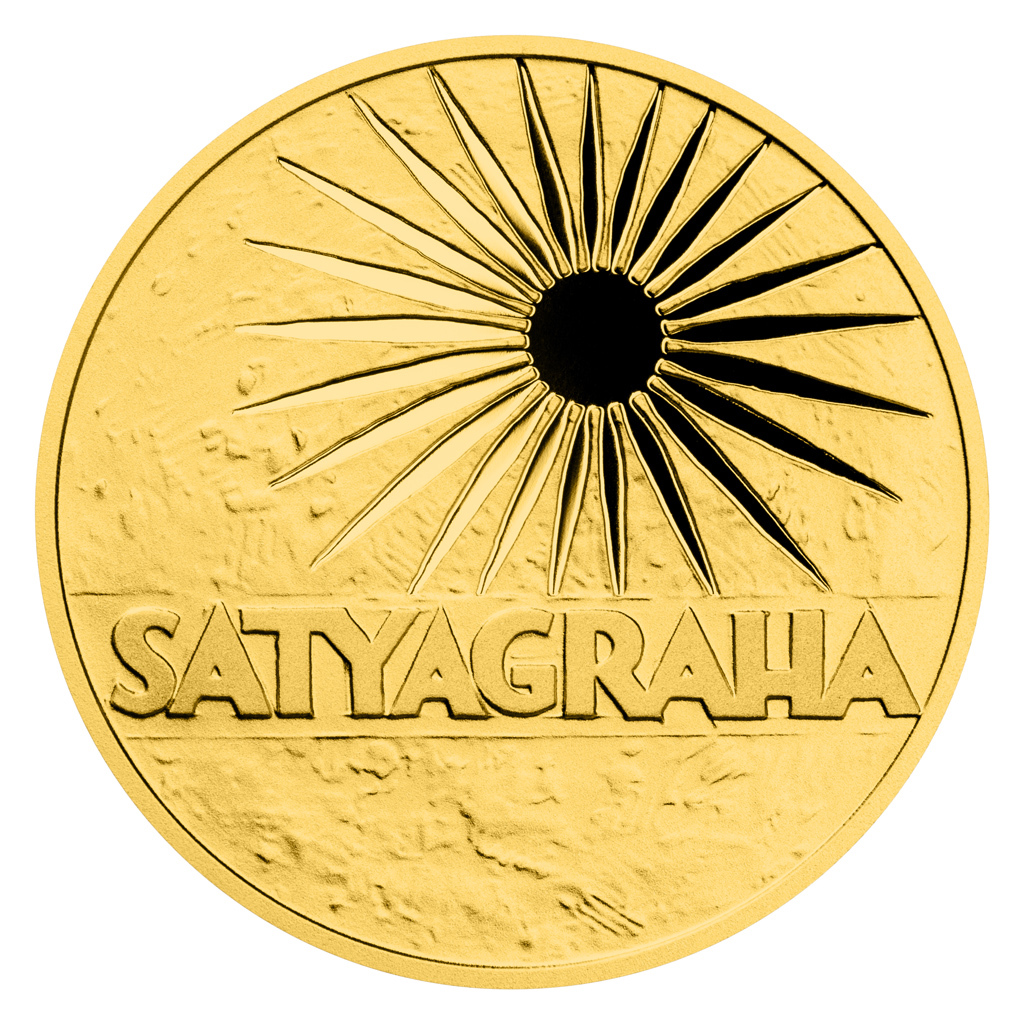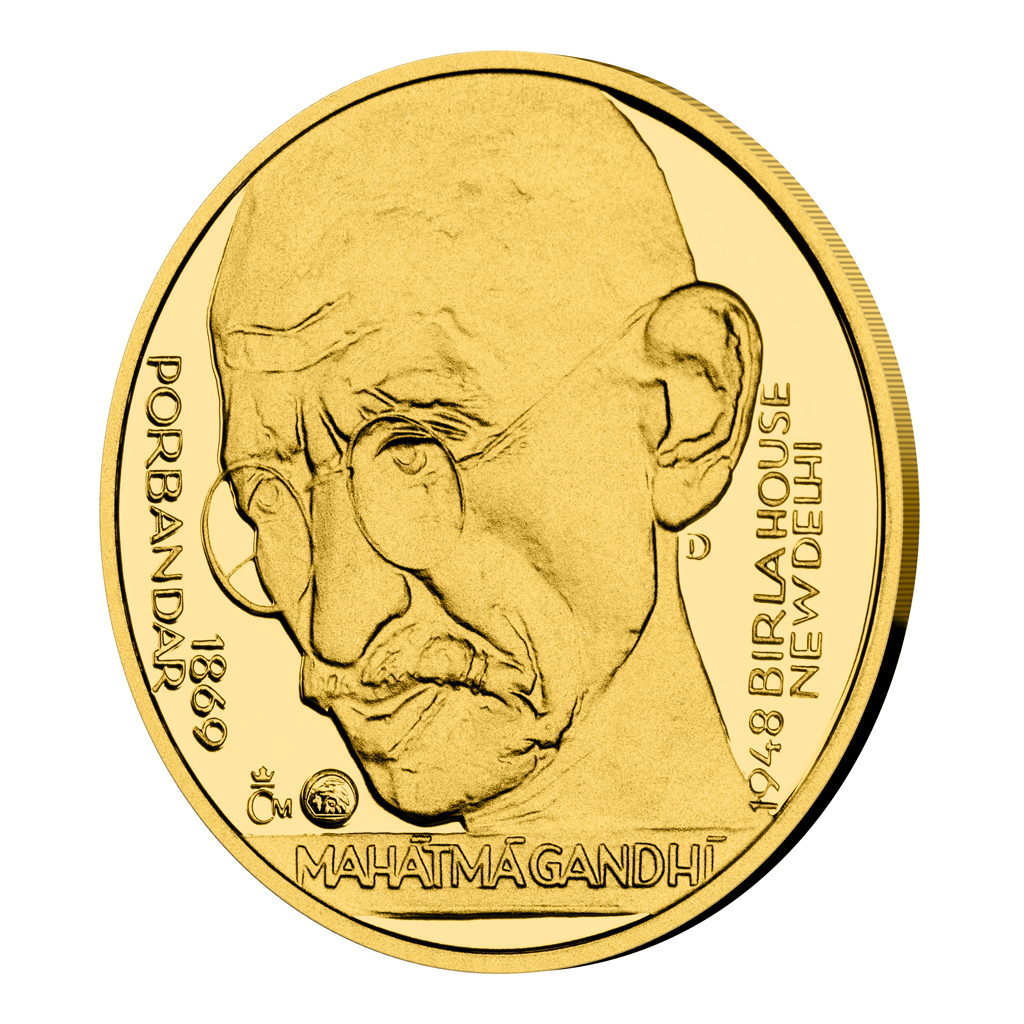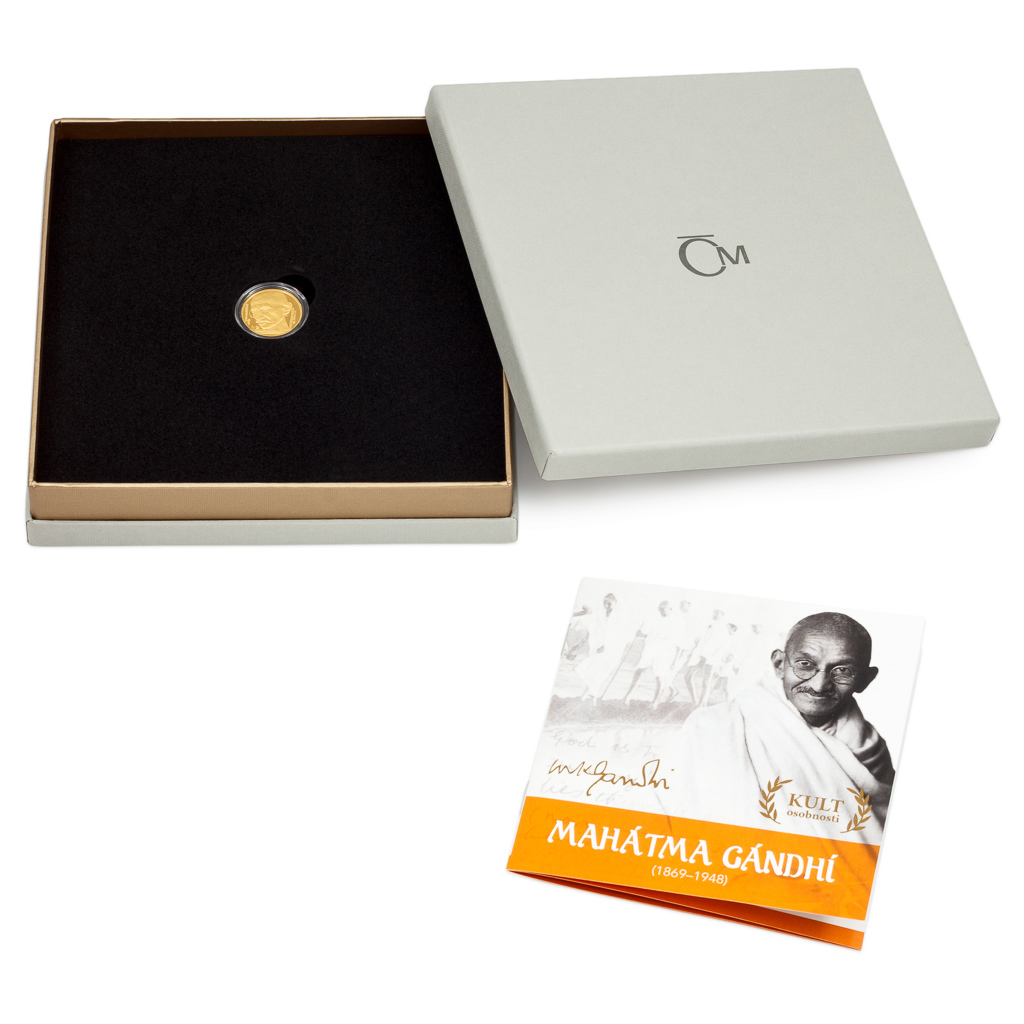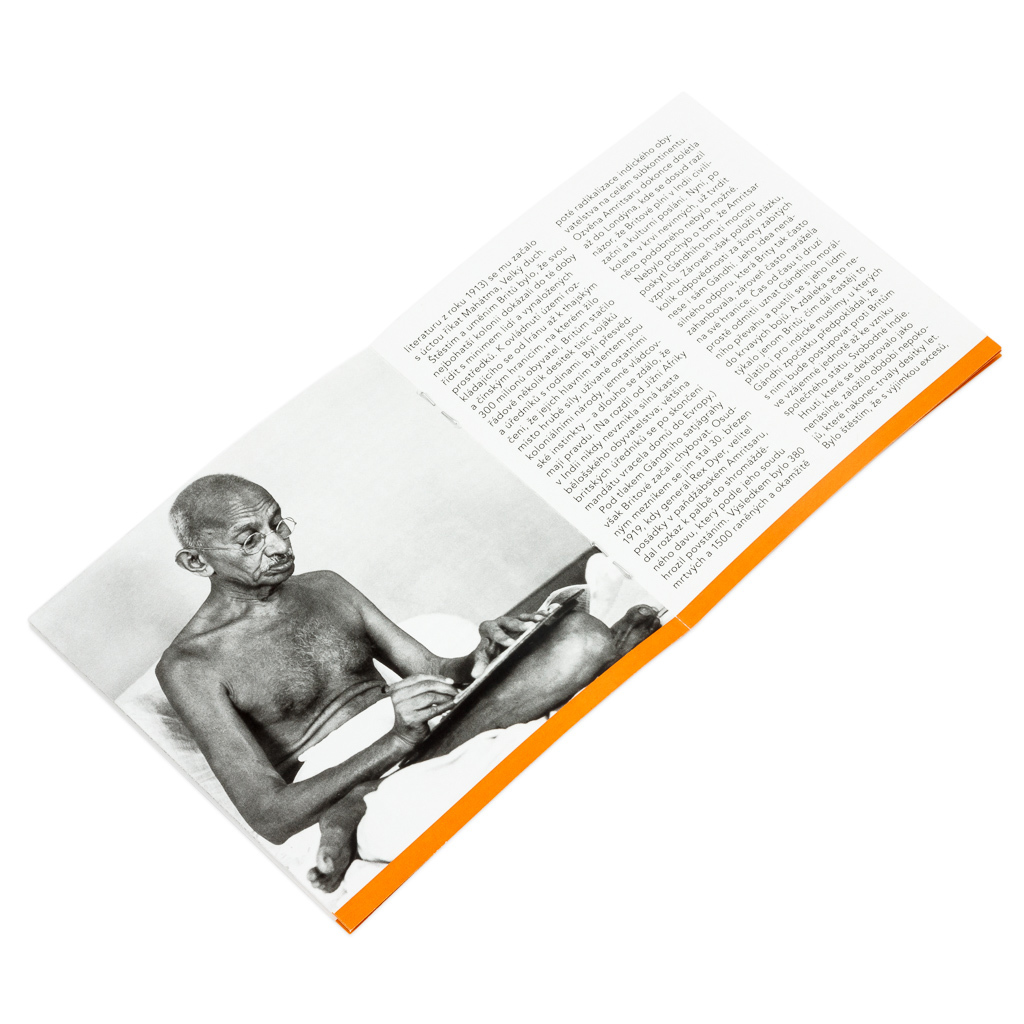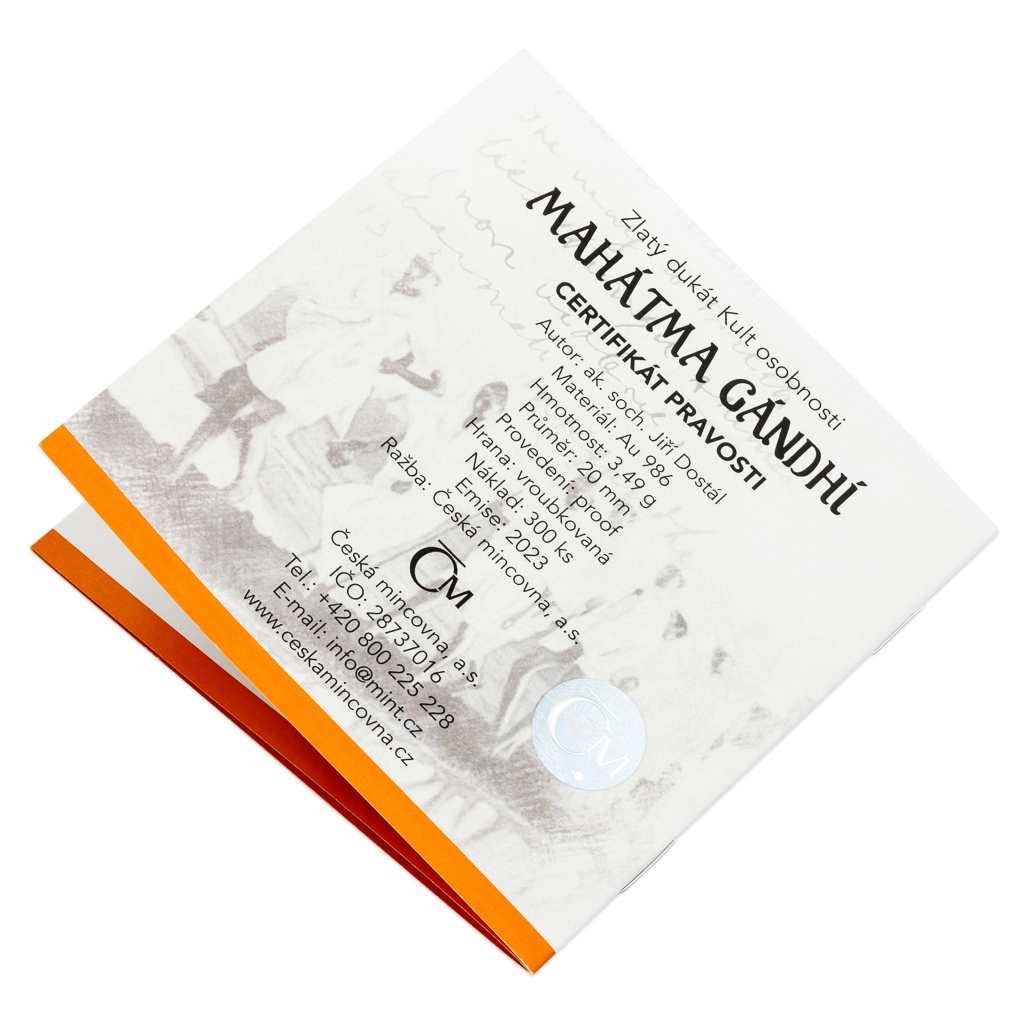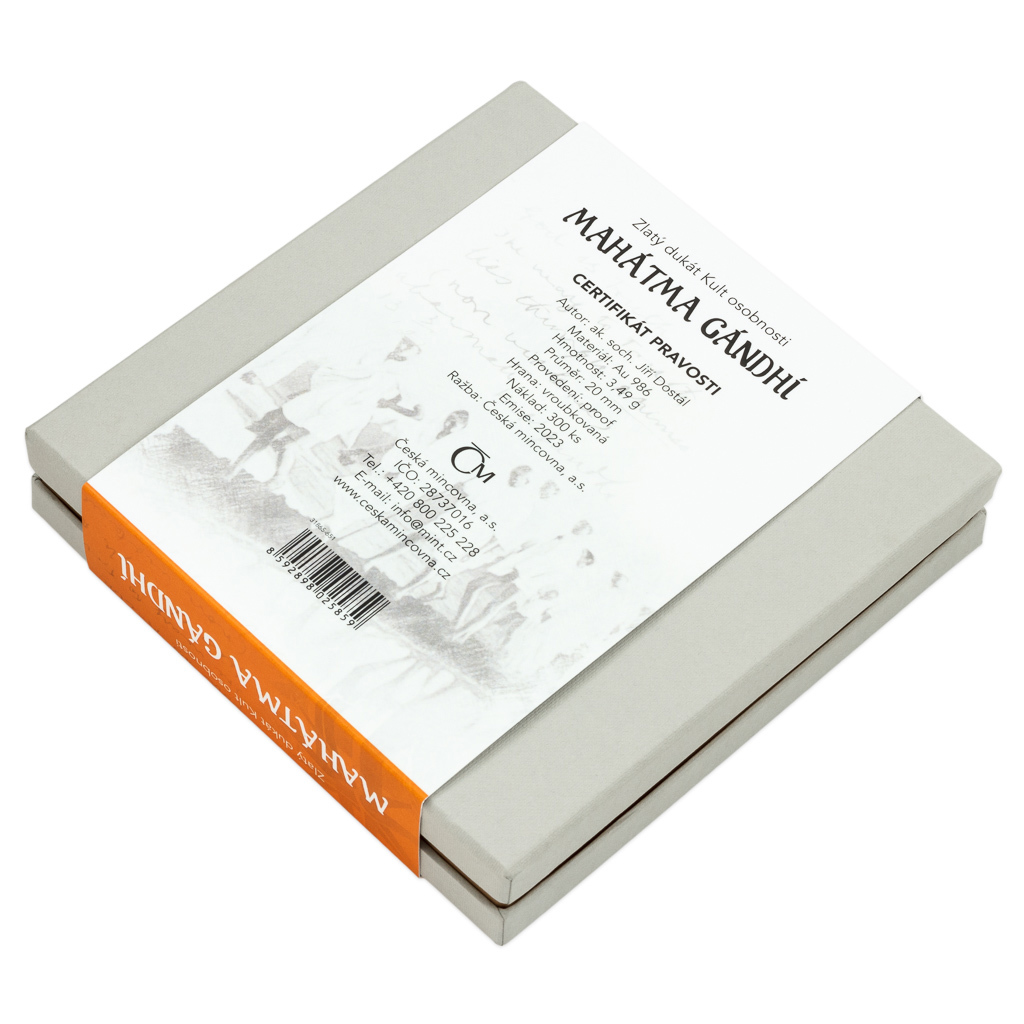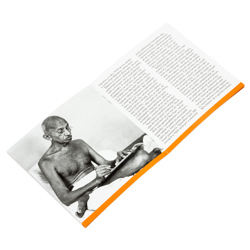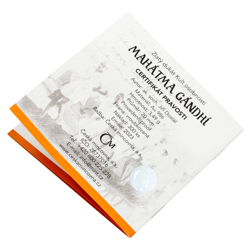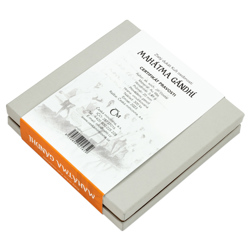Gold ducat Cult of personality - Mahátma Gándhí proof
Gold ducat Cult of personality - Mahátma Gándhí proof
The product can also be purchased directly in the stores of the Czech Mint
Cult of personality
The fifth gold ducat of the Czech Mint from the series called Cult of Personality commemorates the admired figure of Mahátma Gándhí.
Mohandas Karamchand Gandhi is known worldwide as the Mahatma or the Great Spirit. He is also known as the Father of the Nation in his native land... He was born in 1869 in British-ruled India. He came from a wealthy merchant family and studied law at the University of London, but because the Western world saw only the colour of his skin, he decided to become a politician to change the situation of the oppressed. He was convinced that the British were ruling India because the Indians were cooperating with them, and that once they stopped, the power of the occupiers would collapse. He did not advise his fellow citizens to hurt the British - on the contrary, he wanted them to express their frustration only peacefully. His ideas were successful, and his non-violent non-cooperation with autocratic power led India on a path of peaceful rebellion against British colonialism. Gandhi was imprisoned several times for his seditious activities, but his moral superiority was strong enough to make India's long-desired independence possible after World War II. However, the peacemaker had to face another problem in the form of religious intolerance soon. His homeland was divided into Hindu India and Muslim Pakistan, between which conflict flared. Gandhi reacted as he was accustomed to - fearlessly, unflinchingly and quite peacefully. His hunger strike made his enemies reconcile, but his compassion for all people, states and faiths eventually proved fatal. He was shot dead at the age of 78 by an anti-Muslim fanatic who despised the idea of religious tolerance. The funeral procession for Gandhi's coffin numbered one million people. His actions inspired following generations including greats such as Martin Luther King and Nelson Mandela.
The obverse side of the ducat, which is the work of academic sculptor Jiri Dostal, presents a characteristic portrait of Mahatma Gandhi, completed with his name and life dates. "The reverse side is illuminated with a dharma - an ancient emblem loosely inspired by the central element of the Indian flag. The inscription SATYAGRAHA emphasises Gandhi's philosophy of fighting for independence through non-violent resistance," the author adds.
Each ducat includes a special appendix offering an objective view of Mahatma Gandhi through the eyes of historian Pavel Kosatik.
 čeština
čeština
 slovenčina
slovenčina
 english
english
